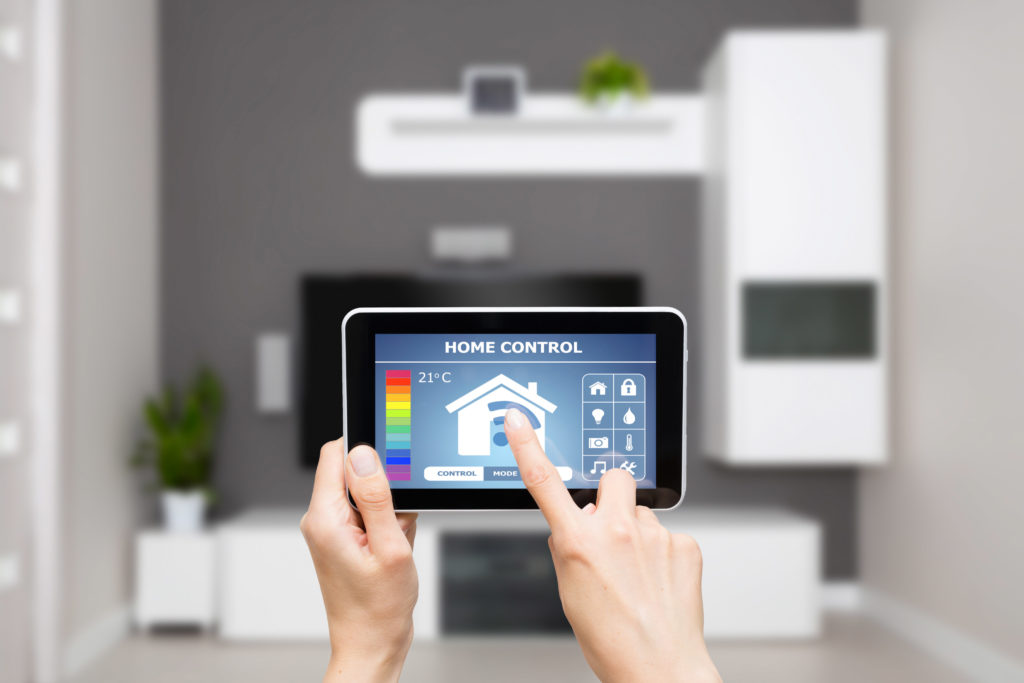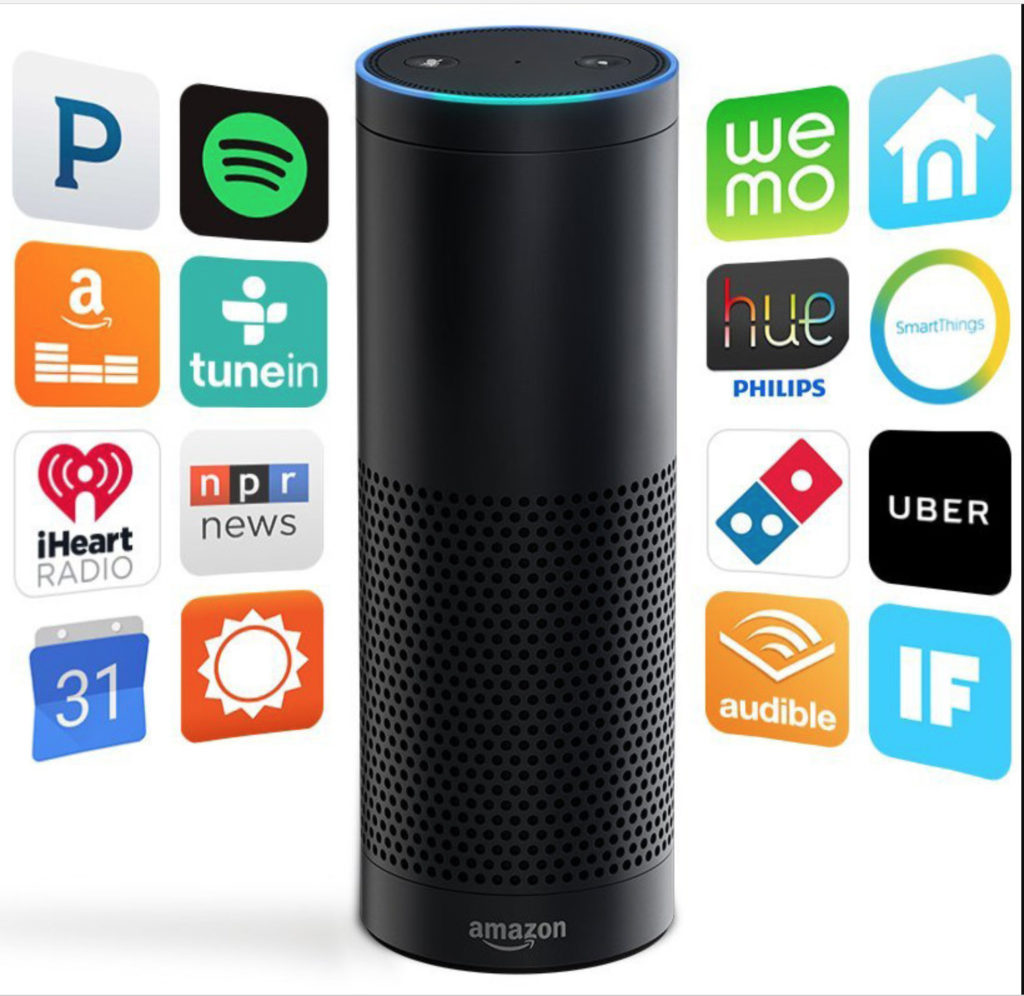The Internet of Things, also known as IoT, is the network of “smart” or connected devices designed to make your life easier. From lighting systems you can control from a smartphone app to smart doorbells, garage openers, coffee makers, washing machines, and thermostats, it seems that the robotic future envisioned by “The Jetsons” in the 1960s has finally arrived.
IoT and The Smart Home
How IoT affects our lives
Connect anything to the internet and it instantly becomes cooler. Your devices communicate with you, they accept your commands, they learn, and they connect to other gadgets in your life. Check out some of the ways you can upgrade your existence.

The urban commuter

If you drive in the city, you probably use pay station-type parking meters at some of the places you park your car. Many now allow users to pay with an app. Some services, like San Francisco’s Streetline or Toronto’s GreenP Parking, even provide real-time parking vacancy information, guiding drivers directly to available spots and eliminating the need to circle the block for hours until a spot opens up.
IoT in the home: how you can take advantage of IoT right now

Have you wondered, “Wouldn’t it be nice if I could just tell the [insert name of household gadget here] what I want it to do? It would make my life so much easier!” As IoT takes hold, your home is solving a lot of the problems that bugged our primitive ancestors.
Security
In the home, IoT-enabled devices can keep you and your family safe by allowing you to turn lights on or off remotely, open the garage door as you approach, or even see who’s knocking at the door while you’re on vacation. Smart locks allow you to open and secure doors without a key. Smart security cameras send images to your phone or a computer so you can keep tabs on your kids or your pets.
Pets

Speaking of pets – IoT devices like Petcube go beyond simple pet-minding by allowing you to manipulate a laser toy to play with your cat, speak to your pet, and even give them treats – all controlled from a smartphone app.
Home comfort and ambiance
Smart lighting and smart thermostats are very popular in many homes, allowing you to program them for your very specific needs. Imagine being able to “tune” the lights in your home to any color and any level of brightness! This really lets you set the mood in ways that you may not even have imagined – all from the comfort of your couch. Disco party? Seduction mode? Starship Enterprise Red Alert recreation? It’s possible.

Your IoT-enabled thermostat can be programmed, too. Many thermostats will “know” when the temperature is falling outside or whether you are at home or away, adjusting the indoor temperature accordingly. Currently, many power companies are installing smart thermostats as it saves energy, both for you and the power grid.
For those who are constantly misplacing things
We’ve all lost or misplaced keys, purses, wallets, or even our smartphones. For those of us who need a little extra help finding those essential items, IoT smart trackers like Trackr are a great solution. The size of a key fob, some are made to be attached to a key ring and some can be affixed to an item (like your phone) and then tracked via an app on your device or computer.
For the homeowner
If you own your home, IoT devices can be a godsend:
- Curb Energy connects to your breaker panel and monitors each of your household appliances to help you better understand your household energy consumption. It also monitors your solar use and storage if you are using solar panels.
- Using smart light bulbs and switches with an IoT hub like Wink, you can program your exterior and exterior lights to change with the sunlight or lack thereof. You can set any mood, or use the music-aware setting so the lights change with the songs you choose.
- Smart sprinkler controllers like Rachio allow you to adjust your watering cycles as needed. No more watering the lawn when it’s raining!
- Security products like Protect America become even smarter by learning your behavior. This helps to identify unusual activity and will help to keep you and your loved ones safe and secure in case of an emergency by sending you security alerts, locking or unlocking doors, calling 911, and more.
Smart home hubs
This year’s biggest IoT trend involves voice-activated smart home hubs like Amazon Echo, Google Home, Wink, and Nest. Also called virtual assistants, these hubs allow you to manage and control all of your connected devices with simple voice commands. You can dial up your favorite music, call your BFF or preheat the oven – that can come in handy when your hands are full or if you’re in another room.
Along with being connected to your other smart devices, these hubs are connected to the internet and to your phone, allowing you to access weather reports, scan the latest headlines, or create to-do lists as tasks occur to you. You can even initiate voice calls or send texts using voice commands, leaving your dialing fingers free to multitask]. The device is always listening for your commands, which are initiated by using a simple phrase like “Hey Google” in the case of Google Home, or “Alexa” in the case of Amazon Echo.
Here are three of the top-rated IoT hubs on the market today:
Amazon Echo

Talk about making things easy – if you order from the Amazon website often, you can use your Amazon Echo to help you get your grocery shopping done – or any other kind of shopping, for that matter. Ask Alexa to call your mother, play your favorite Spotify playlist, or check the final scores on the big game. There are several models of Amazon Echo, and depending on what services or devices you have attached to it, you can design a pretty immersive and totally personalized experience for yourself.
Wink
Wink leverages a wide range of smart devices (including Amazon Alexa) to help you build your connected home. It will control everything from your window blinds to your security system from a single app, eliminating the need to access individual apps for each feature or product. Wink helps your connected devices work together – such as having certain lights turn on the moment your door unlocks.
Nest
Nest connects to a long list of technologies such as your thermostat, your lighting, Google Home, door locks, doorbells, your security system, appliances, smoke alarms, carbon monoxide alarms, ceiling fans, and more. Being able to control all of your connected devices from one platform is easy and the list of compatible technologies is growing every day.
There are more home hubs to choose from, including Samsung Smart Things and Logitech Harmony Hub – and they all do a fine job. Your choice will likely depend on the IoT brands you currently use or are planning to purchase and whether those items are compatible with the hub.
While you don’t necessarily need a hub to make IoT work for you, it simplifies the management of your devices by giving you a single control panel from which to access everything. Why wouldn’t you want to make things simpler?
The future of IoT
So where do we go from here? As far as our imaginations can take us.
The Moley Kitchen, for instance, is the world’s first robotic kitchen, complete with a fully functioning robot that cooks with the skill and precision of a master chef. Self-driving cars, like Google’s Waymo, are already on the road, and they could be in your garage soon. In the future, our entire lives could be connected like never before, making us happier, healthier and more efficient. Just keep your eyes peeled for the next big thing!

